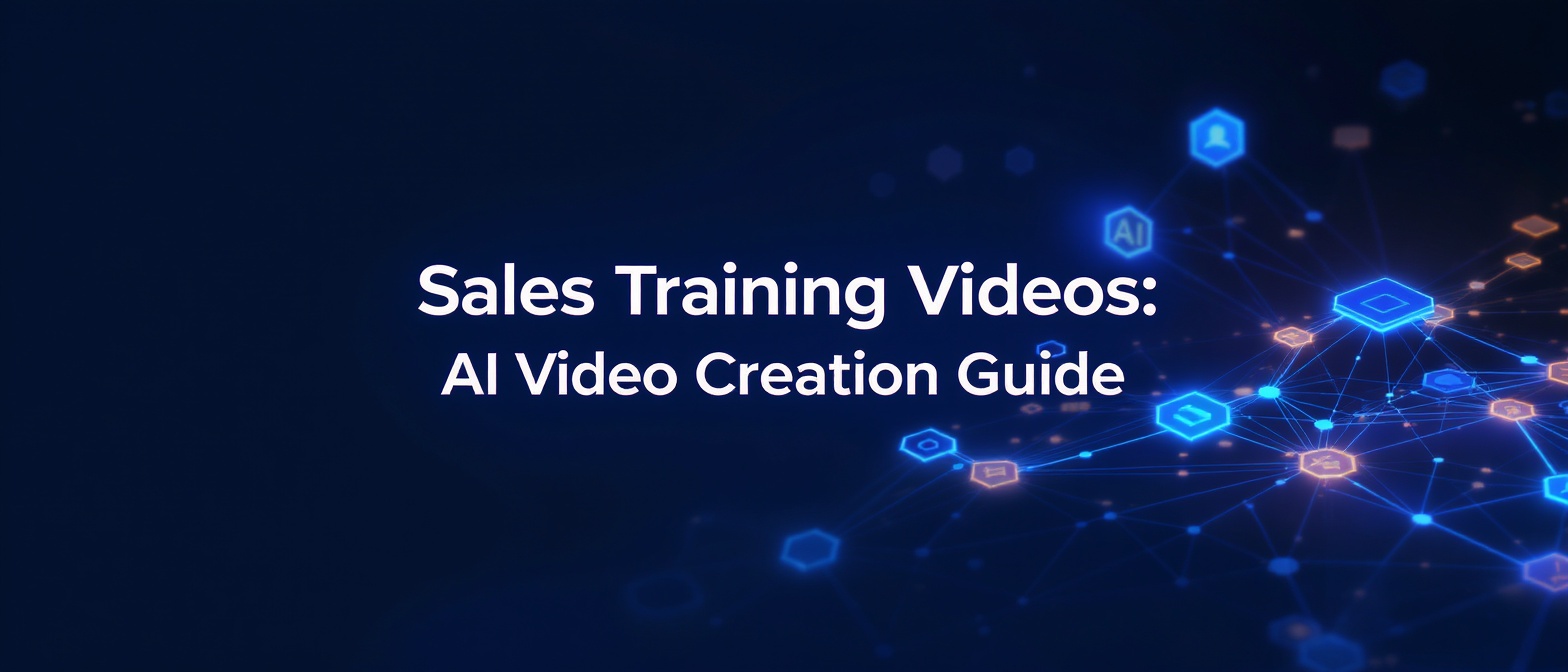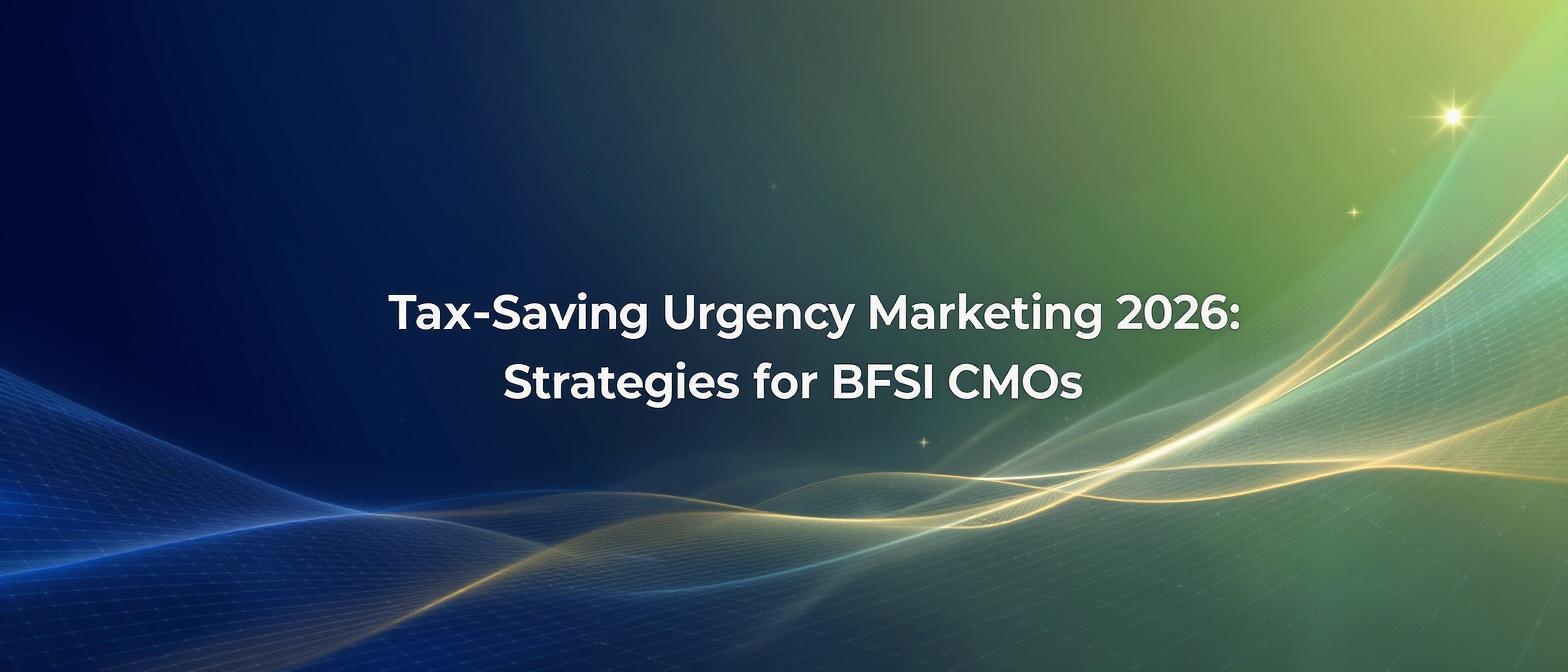The Ultimate Guide to Creating Sales Training Videos That Actually Drive Revenue in 2025
Estimated reading time: ~17 minutes
Key Takeaways
- Modern video strategy is essential for scalable and impactful sales training.
- AI-powered video creation significantly reduces production cost and time.
- Microlearning increases retention through short, focused content.
- Measurement and ROI tracking tie training initiatives directly to sales performance.
In the high-stakes world of sales, effective training is the bedrock of success. Yet, for decades, sales enablement has been stuck in a loop of expensive offsites, dense binders, and one-off training sessions that are forgotten almost as soon as they’re completed. The core problem is that most sales training is inefficient, inconsistent, and fails to stick. This is where modern, scalable sales training videos enter the picture, not just as a “nice-to-have,” but as a critical engine for revenue growth.
The cost of ineffective training is staggering. According to research from Qwilr, companies with structured and continuous sales training programs see significantly better performance. In fact, a 2025 report highlights that organizations investing in ongoing training are far more likely to hit their revenue targets. When training fails, you’re not just wasting the training budget; you're losing deals, burning leads, and churning talented reps who feel unsupported. The agitation is real: missed quotas, inconsistent messaging, and a widening gap between your top performers and everyone else.
The solution is a strategic shift from traditional, static training methods to a dynamic, video-first approach. By leveraging the right strategy and technology, you can create a library of high-impact sales training content that is engaging, accessible on-demand, and—most importantly—measurably improves performance. This guide will walk you through the entire process, from foundational strategy to calculating ROI, empowering you to build a sales training program that transforms your team into a consistent, revenue-generating machine.
Why Your Old Sales Training Playbook Is Failing (And Costing You Money)
Before we build the new, we must understand why the old is broken. Traditional sales training methods, while well-intentioned, are fundamentally misaligned with the fast-paced, digital-first nature of modern sales. They are often too slow, too expensive, and too generic to make a lasting impact.
The primary culprit is a psychological principle known as the “Forgetting Curve.” Pioneered by psychologist Hermann Ebbinghaus, this concept demonstrates that humans forget approximately 50% of new information within an hour, and up to 90% within a week if it’s not reinforced. A one-day training seminar, no matter how inspiring, is fighting a losing battle against human memory. A 2025 study from the Journal of Sales Enablement confirmed this, finding that less than 20% of skills from one-off training events are retained after 90 days without reinforcement.
Here are the critical limitations of outdated training models:
- High Costs & Logistical Nightmares: Flying entire teams to a central location, booking venues, and hiring external trainers is incredibly expensive. The cost per rep can easily run into thousands of dollars, not including the opportunity cost of taking them out of the field.
- Inconsistency of Message: When training is delivered by different managers or trainers across various regions, the core message inevitably gets diluted or altered. This leads to reps using different talk tracks, presenting value propositions inconsistently, and ultimately creating a fragmented customer experience.
- Lack of On-Demand Access: A sales rep facing a unique objection on a Tuesday afternoon can’t wait for the next quarterly training session. They need answers and reinforcement in their moment of need. Traditional training offers no “just-in-time” support, leaving reps to fend for themselves.
- Scalability Issues: How do you efficiently onboard 50 new reps hired across three continents? How do you roll out a critical update to your product messaging overnight? Traditional methods are simply too slow and cumbersome to scale effectively in a growing organization.
These challenges create a cycle of wasted investment and stagnant performance. To break free, you need a new blueprint.
The Modern Blueprint: Strategizing High-Impact Sales Training Videos
Effective sales training videos are not about simply hitting “record” on a webinar. They are strategic assets designed to achieve specific business outcomes. Before you even think about a script or a camera, you must lay a strategic foundation.
Aligning Training with Core Business KPIs
Your training content should be reverse-engineered from your primary business goals. Don’t just train for the sake of training; train to move the needle on key performance indicators (KPIs).
- Quota Attainment: If your goal is to increase the percentage of reps hitting their quota, your videos should focus on high-leverage activities. This could include modules on effective discovery calls, handling top-of-funnel objections, or advanced negotiation tactics.
- Sales Cycle Length: To shorten the sales cycle, create videos that equip reps to create urgency and build consensus with multiple stakeholders. This might involve training on how to identify and engage an executive buyer or how to build a compelling business case.
- Win Rates: To improve your win rate against key competitors, develop videos that arm your team with effective competitive positioning, battle cards, and strategies for navigating procurement.
Choosing the Right Training Methodology
Not all video content is created equal. The format and length should match the learning objective.
- Microlearning: This involves creating short, bite-sized videos (typically 2-5 minutes) that focus on a single skill or concept. Microlearning is perfect for on-demand reinforcement. For example, a library of 3-minute videos on how to handle specific pricing objections can be a rep’s best friend right before a critical call. According to a 2025 report from Gartner, organizations that implement microlearning can see up to a 17% increase in knowledge retention.
- Macrolearning: This refers to longer-form content (15-45 minutes) that covers a broader topic in depth, such as a full product onboarding module or a deep dive into a new sales methodology like MEDDIC. These are foundational pieces of content best suited for structured learning paths.
A successful program blends both, using macrolearning for foundational knowledge and microlearning for continuous reinforcement.
Scenario-Based Learning: Preparing Reps for the Real World
The most effective training simulates real-world challenges. Instead of just telling reps what to do, show them. Use video to create realistic role-playing scenarios.
- Good vs. Bad Examples: Create two videos demonstrating a discovery call. In the first, the rep makes common mistakes. In the second, they execute flawlessly. This contrast is a powerful learning tool.
- Objection Handling Library: Build a video library where each video presents a common objection and then demonstrates an ideal response.
- Interactive Scenarios: Modern video platforms can create “choose your own adventure” style training where a rep watches a clip and then chooses how to respond, leading them down different paths based on their answers.
The New Tech Stack: Scaling Production with AI Video Creation
The biggest historical barrier to a comprehensive video training program has been the production bottleneck. High-quality video used to require cameras, studios, lighting, and extensive editing skills. This is no longer the case. The rise of AI video generation has completely democratized video production.
AI-powered platforms allow you to create professional-grade videos from nothing more than a script. This technology is the key to unlocking scalable, consistent, and cost-effective sales training. A 2025 survey by Vena Solutions found that one-third of sales professionals cite budget and lack of training as their biggest hurdles to AI adoption. Ironically, AI video platforms directly solve this budget and resource constraint.
Platforms like Studio by TrueFan AI enable sales leaders to create consistent, high-quality training modules in minutes, not months. Imagine needing to update your team on a new pricing model. Instead of scheduling dozens of webinars across time zones, you can type a script, choose a photorealistic AI avatar, and generate a perfectly delivered video in multiple languages within the hour.
The core benefits of using AI for video creation include:
- Unmatched Speed: Go from script to finished video in minutes.
- Radical Cost-Effectiveness: Eliminate the need for actors, film crews, and expensive editing software.
- Absolute Consistency: Every video is delivered with the same perfect tone, pacing, and branding. Your messaging is never diluted.
- Effortless Scalability & Localization: Create training for a global team without logistical headaches. Update content instantly by simply editing the script and re-rendering the video.
A Step-by-Step Guide to Producing Your First AI-Powered Sales Video
Adopting this new technology is surprisingly simple. Here’s how to create a high-impact sales training video using an AI platform.
Step 1: Scripting for Retention, Not Just Information
A great video starts with a great script. Don’t just write a transcript of a manual. Structure your script for engagement and retention.
- Use the P-A-S Framework: Start by outlining the Problem your reps face, Agitate that problem by explaining its consequences, and then present the Solution (the skill or knowledge you’re teaching).
- Write Conversationally: Write the script as if you were speaking directly to a single sales rep. Use clear, concise language and avoid corporate jargon. Read it aloud to ensure it sounds natural.
- Focus on One Idea: For microlearning videos, stick to a single, focused learning objective for each video.
Step 2: Choosing Your Presenter: The Power of AI Avatars
With AI video platforms, you can choose from a library of stock AI avatars or even create a custom avatar of your own head of sales. This offers several advantages over filming a real person.
- Consistency: The AI avatar will always be perfectly on-brand, professionally dressed, and ready to record.
- No Reshoots: If the script changes, you don’t need to book the person and studio again. You just edit the text.
- Global Reach: Studio by TrueFan AI’s 175+ language support and AI avatars mean you can create localized training for a global sales team from a single script, ensuring everyone gets the same message in their native language. This capability is a game-changer for international teams, ensuring perfect lip-sync and cultural relevance without the enormous cost of traditional localization.
Step 3: Generation & Editing in the Browser
Once your script is ready and your avatar is selected, the magic happens. You simply paste your text into the platform, and it generates the video, complete with a natural-sounding voice and perfect lip-sync. Modern platforms include in-browser editors that allow you to:
- Add text overlays and lower thirds to emphasize key points.
- Set custom backgrounds, like your company’s logo or a professional office setting.
- Add subtitles and captions for accessibility, which has been shown by HubSpot to significantly increase viewer engagement.
Step 4: Enhancing with Interactive Elements
To combat passive viewing, incorporate interactive elements. Many modern learning management systems (LMS) and video platforms allow you to add features like:
- In-video quizzes: Pause the video and ask a multiple-choice question to test comprehension.
- Branching scenarios: Let the viewer make a choice that determines which part of the video they see next.
- Embedded links: Add clickable links to resources like battle cards, case studies, or your CRM.
Beyond Production: Deployment, Measurement, and ROI
Creating the video is only half the battle. A successful program requires a thoughtful approach to distribution and a relentless focus on measuring impact.
Advanced Distribution Strategies
Your videos need to be easily accessible where your reps already work.
- LMS Integration: House your core training modules (macrolearning) in your company’s Learning Management System for structured onboarding and certification paths.
- Just-in-Time Learning: Embed your microlearning videos directly within your CRM. Imagine a rep looking at a competitor’s account page and seeing a 2-minute video on “How to Win Against Competitor X” right on the screen. This is powerful, contextual learning.
- Sales Enablement Platforms: Tools like Highspot or Seismic are excellent for organizing and surfacing relevant training content based on the sales stage or context of a deal.
Measuring What Matters: Engagement vs. Performance Metrics
It’s easy to track vanity metrics like “views” and “completion rate.” While these are useful for gauging engagement, they don’t tell you if the training is actually working. You must tie your video analytics back to business performance.
- Correlate Training with Performance: Track which reps have completed the “Advanced Negotiation” module. Then, analyze their average discount rates over the next quarter compared to those who haven’t.
- A/B Test Your Content: Create two versions of a video with slightly different messaging and see which one leads to better outcomes in role-playing certifications or real-world calls.
- Gather Qualitative Feedback: Survey your reps. Ask them which videos are most helpful and what topics they need more training on.
Calculating the True ROI of Video Training
The return on investment from AI-powered video training is multifaceted. It’s not just about cost savings on production; it’s about revenue generation.
Solutions like Studio by TrueFan AI demonstrate ROI through dramatically reduced production costs, faster onboarding times, and the ability to rapidly update content as products or sales strategies evolve. A 2025 report from Brandon Hall Group found that companies with effective training programs see 218% higher income per employee.
Consider this formula:
ROI = (Improved Performance Gains + Avoided Traditional Training Costs - AI Platform Cost) / AI Platform Cost
Improved performance gains can include the revenue impact of a 5% increase in win rates or a 10% reduction in sales cycle length. When you map training to these metrics, the business case becomes undeniable.
The Future of Sales Enablement is Visual and AI-Driven
We are at the beginning of a major transformation in corporate learning and development. The future of sales enablement is not more binders or longer seminars; it’s smarter, more personalized, and more accessible content delivered via video.
Looking ahead, we can anticipate even more advanced trends:
- AI-Generated Scripts: Generative AI will soon be able to analyze your top performers’ call recordings and automatically draft scripts for training videos that codify what makes them successful.
- Personalized Learning Paths: AI will create customized video training playlists for each rep based on their individual performance gaps identified in CRM data.
- Immersive Learning with VR/AR: Virtual and augmented reality will allow reps to practice sales conversations with holographic “customers” in highly realistic, simulated environments.
Organizations that embrace this technological shift will build a formidable competitive advantage. They will onboard reps faster, adapt to market changes more quickly, and empower their entire team to perform at an elite level.
Frequently Asked Questions (FAQ)
How long should a sales training video be?
For maximum engagement and retention, follow the principles of microlearning. Aim for 2-5 minutes for videos covering a single, specific skill or concept. For more complex, foundational topics (macrolearning), you can go longer (15-30 minutes), but be sure to break up the content with chapters, summaries, and interactive elements.
What’s the best way to keep salespeople engaged with video training?
Engagement comes from relevance and interactivity. Ensure the content directly addresses the real-world challenges they face daily. Incorporate storytelling, scenario-based examples, and in-video quizzes. Furthermore, foster a culture of learning by having managers discuss the video content in team meetings and by recognizing reps who apply the skills effectively.
How can I create training videos for a global, multilingual team?
This was once a massive logistical and financial challenge. Today, AI is the definitive solution. Platforms like Studio by TrueFan AI allow you to take a single English script and instantly generate a perfectly lip-synced video in over 175 languages. This ensures absolute message consistency across your entire global team while delivering the content in each rep’s native language, which dramatically improves comprehension and retention.
What are the biggest mistakes to avoid when creating sales training videos?
The top mistakes include: 1) Making them too long and boring (the “talking head” webinar). 2) Focusing only on product features instead of customer problems and value. 3) Having poor audio quality—viewers will forgive bad video before they forgive bad audio. 4) Creating content without a clear performance goal in mind (“random acts of training”).
Can I measure the direct impact of video training on sales numbers?
Yes, but it requires a strategic approach. By integrating your video platform or LMS with your CRM, you can draw direct correlations. For example, you can track the win rates of reps who have completed a specific competitive intelligence module versus those who haven’t. This allows you to move beyond engagement metrics and measure the direct impact on revenue-generating activities, proving the value of your training program to leadership. For more insights on measurement, a report from the Sales Management Association provides excellent frameworks.
Conclusion
The era of slow, expensive, and forgettable sales training is over. The future belongs to organizations that are agile, data-driven, and technologically empowered. By embracing AI-powered sales training videos, you can break the cycle of the Forgetting Curve and create a culture of continuous learning and improvement.
The path forward is clear: start with strategy, not just tactics. Align your training directly with your most important business goals. Leverage the incredible power of AI video creation to produce high-quality content at scale. And finally, measure everything, tying your training initiatives directly to performance metrics. By following this ultimate guide, you can build a sales training program that doesn’t just inform—it transforms. You can equip your team with the skills, knowledge, and confidence they need to crush their goals and drive predictable revenue growth in 2025 and beyond.





